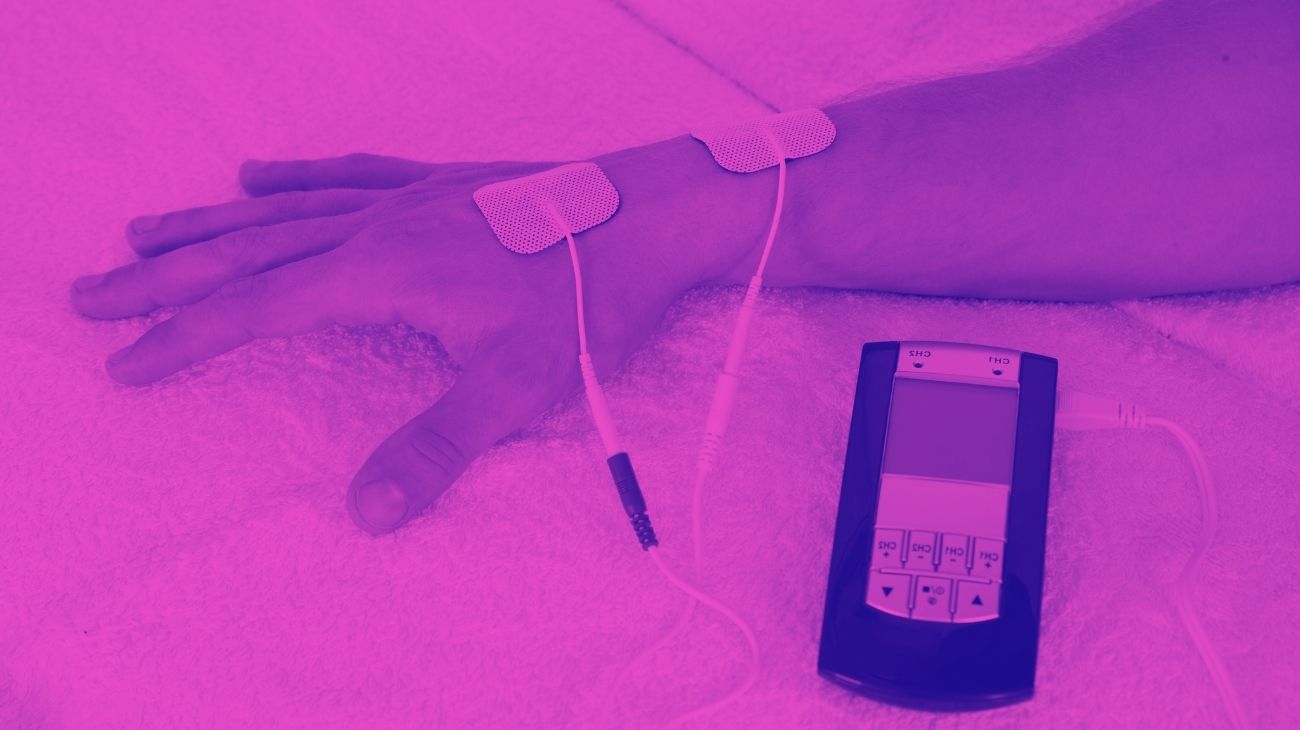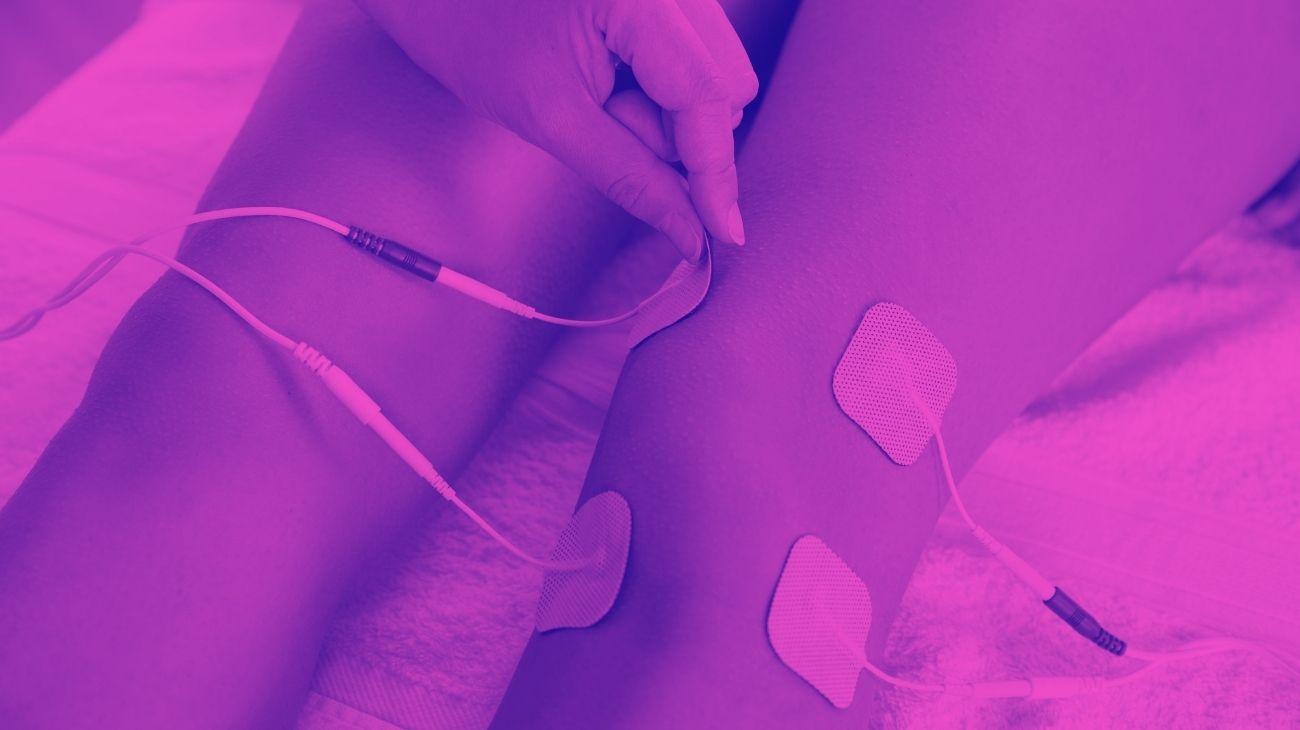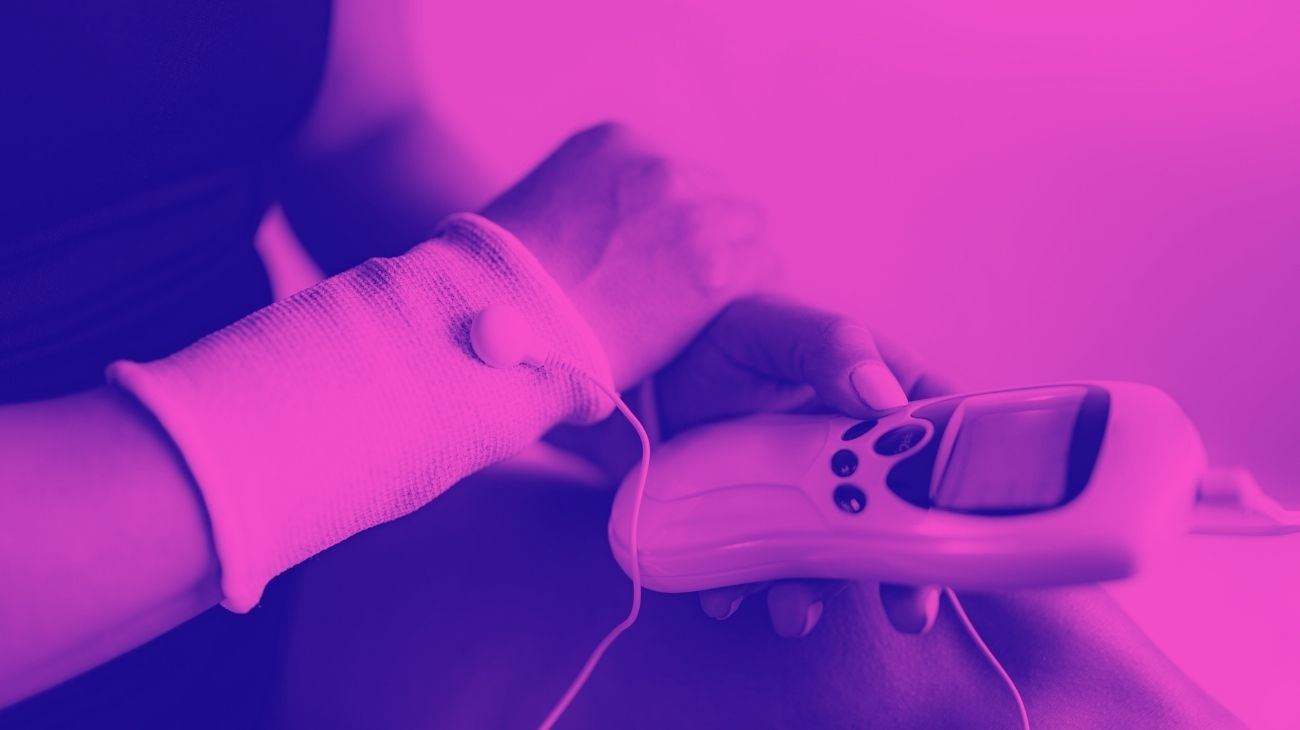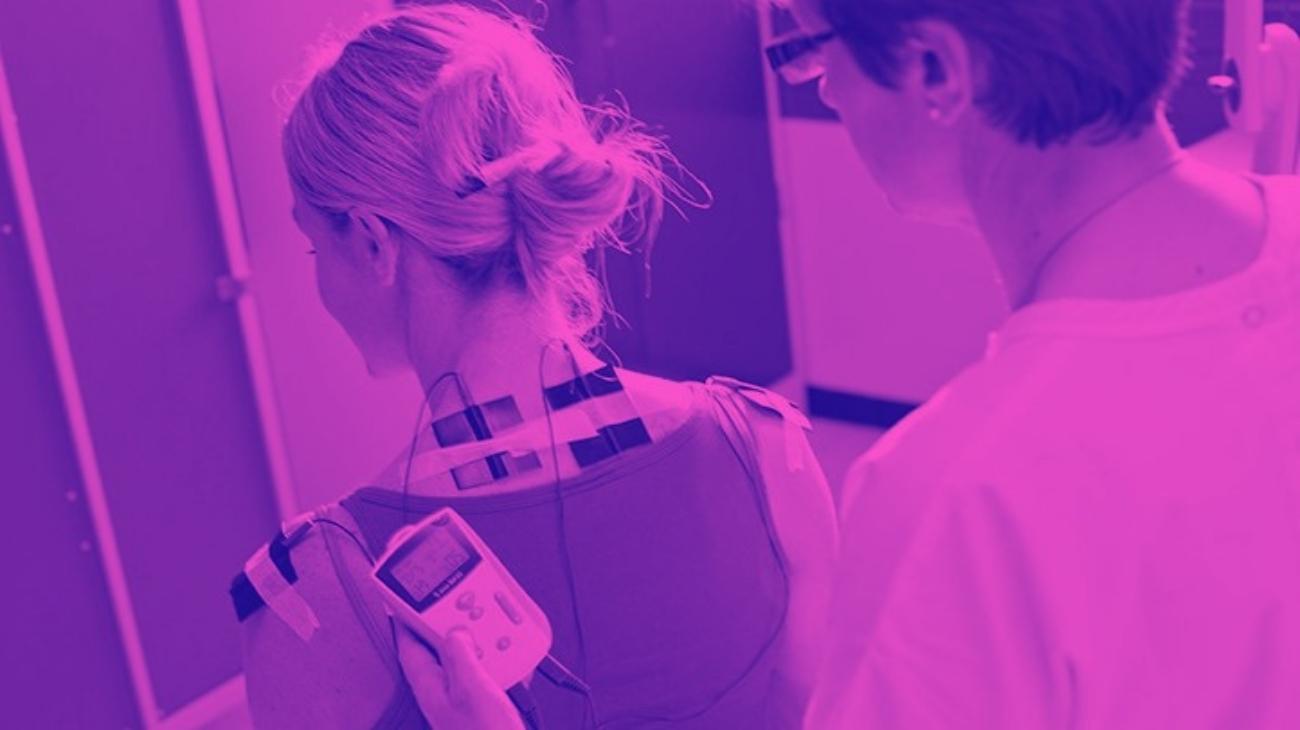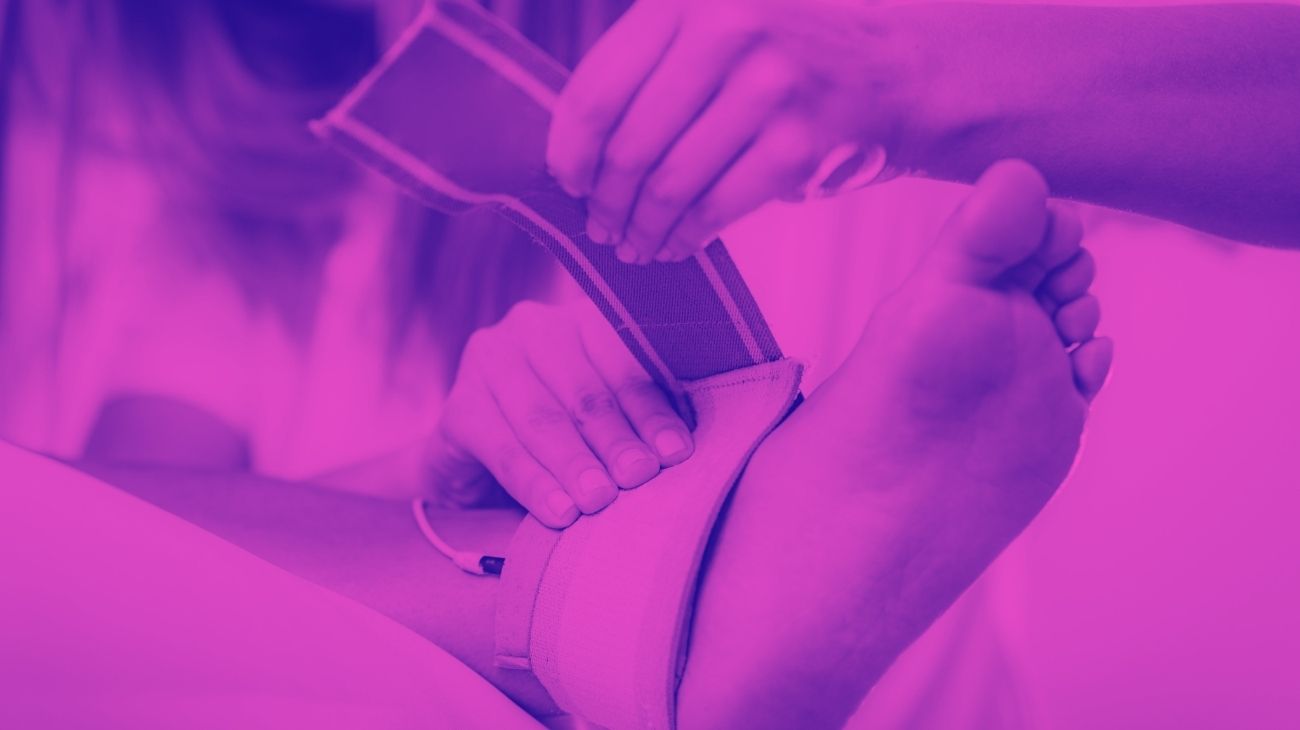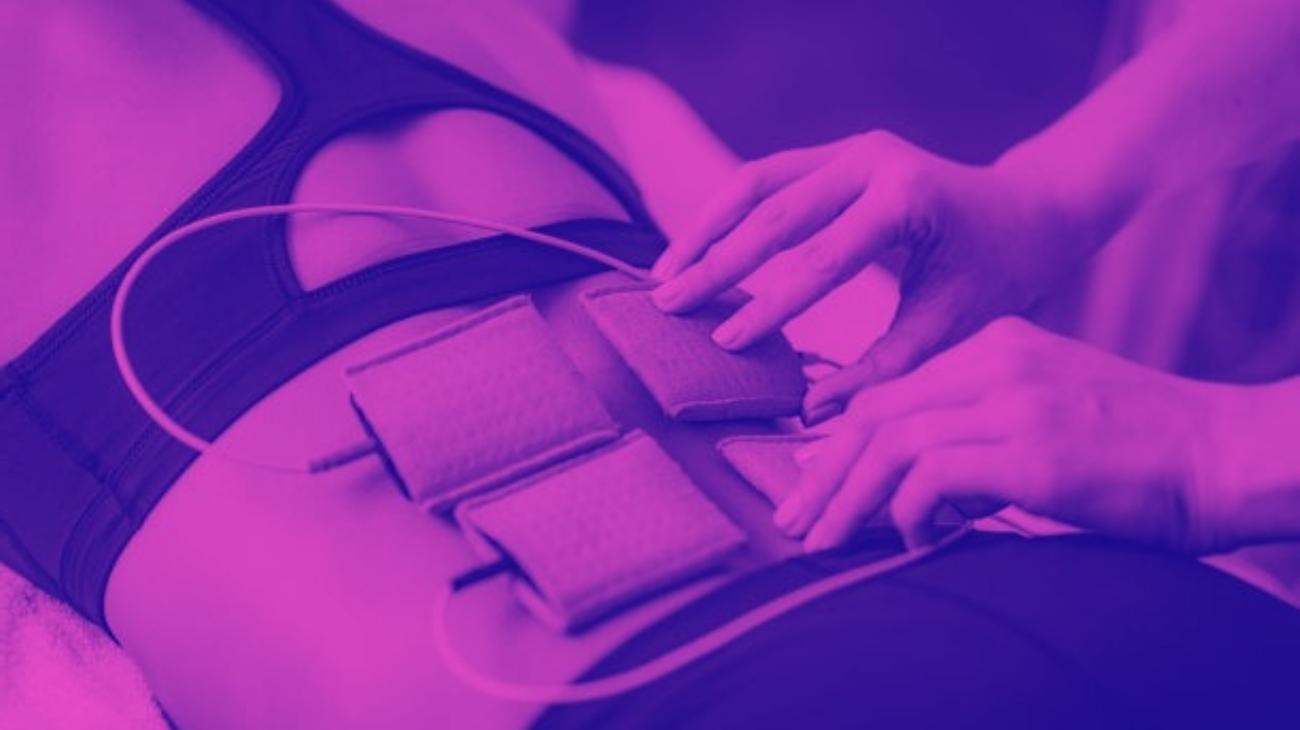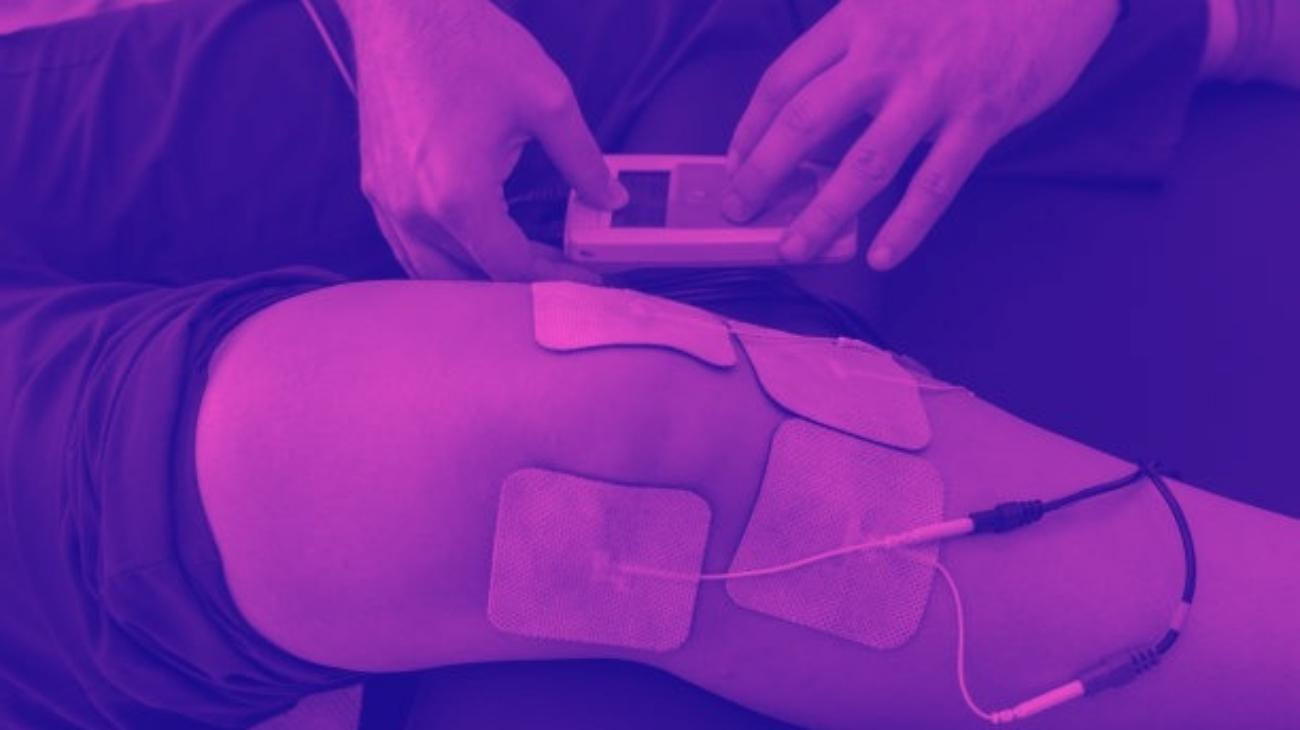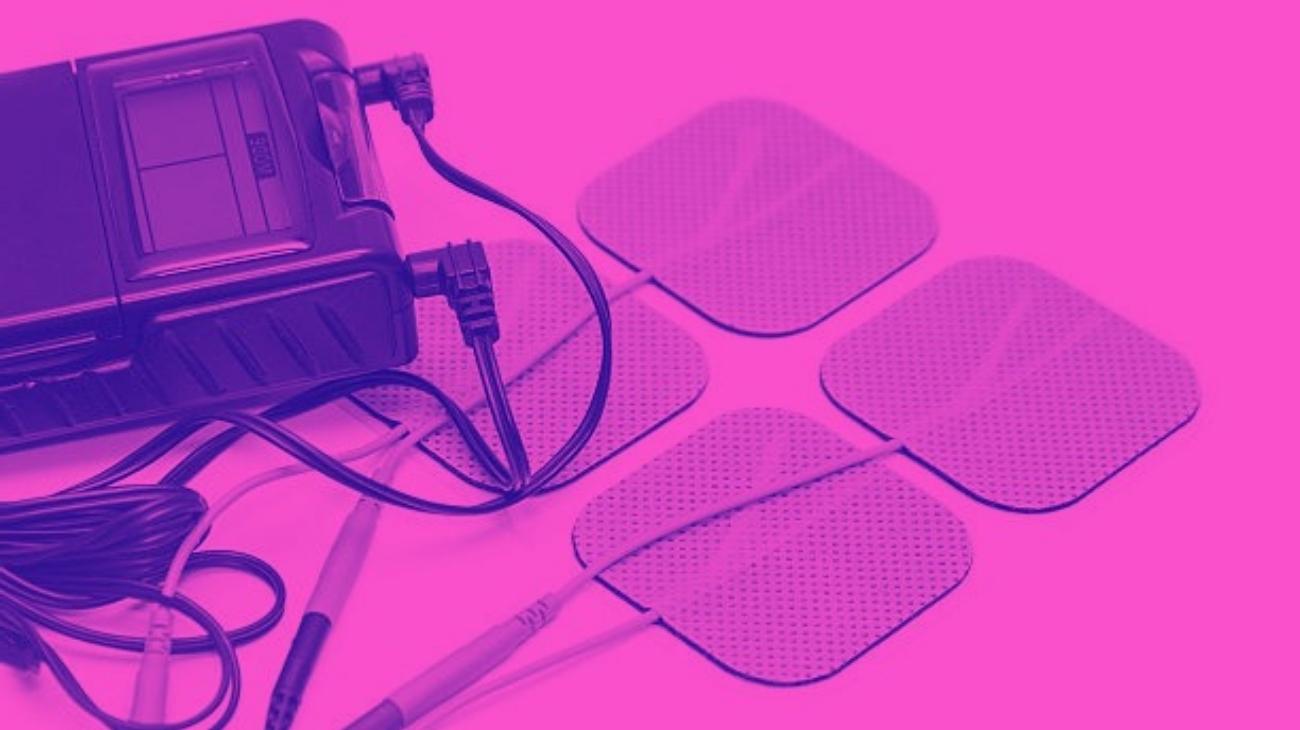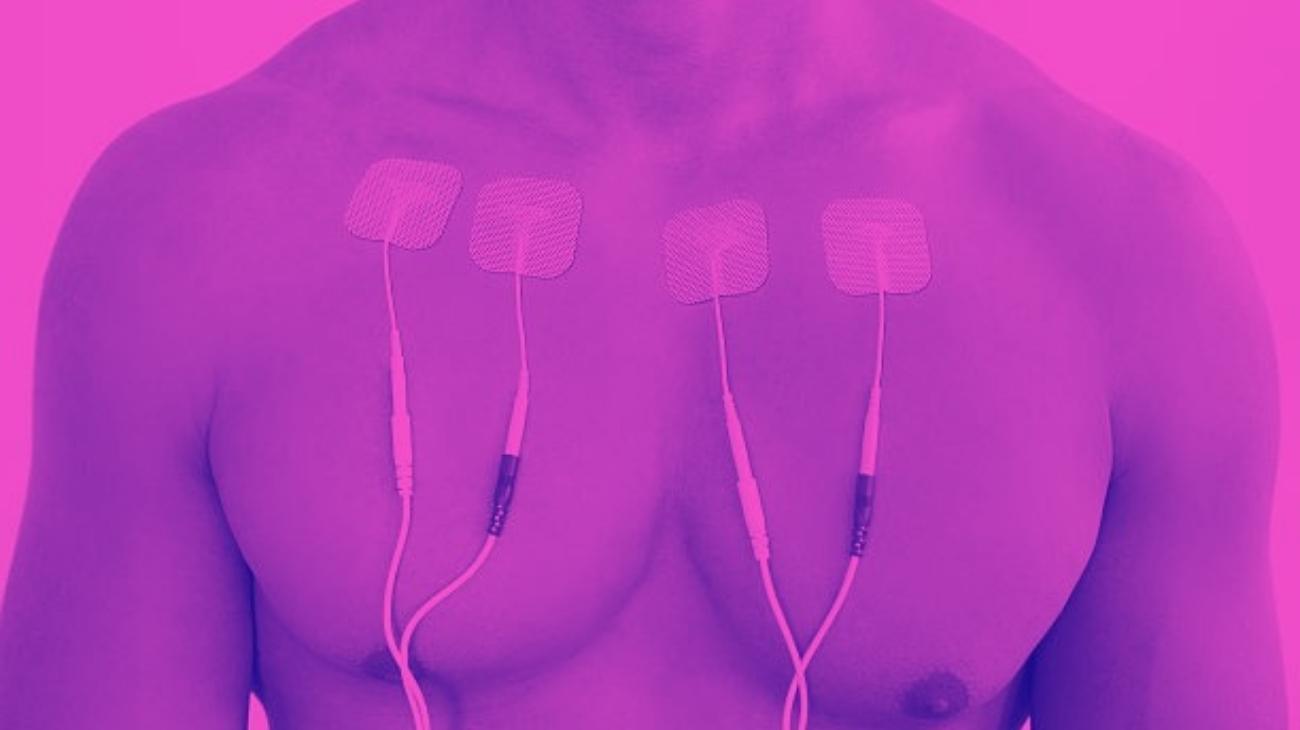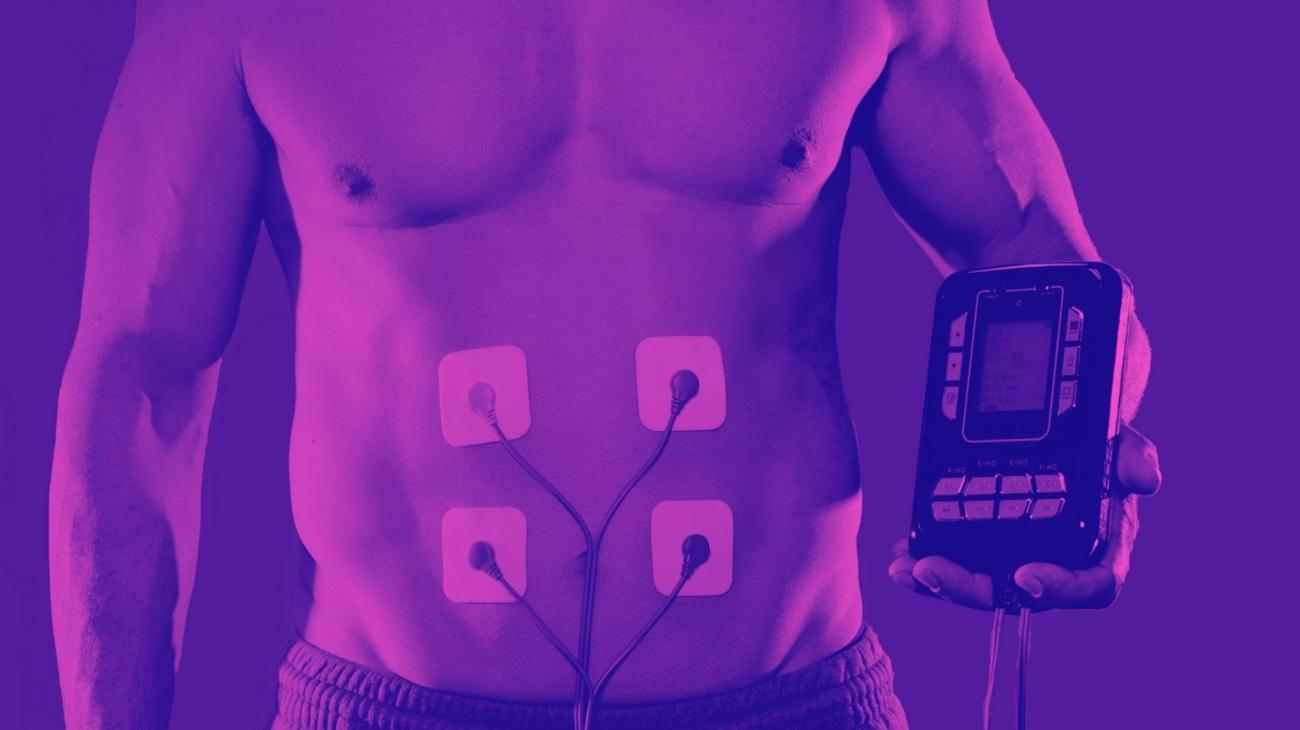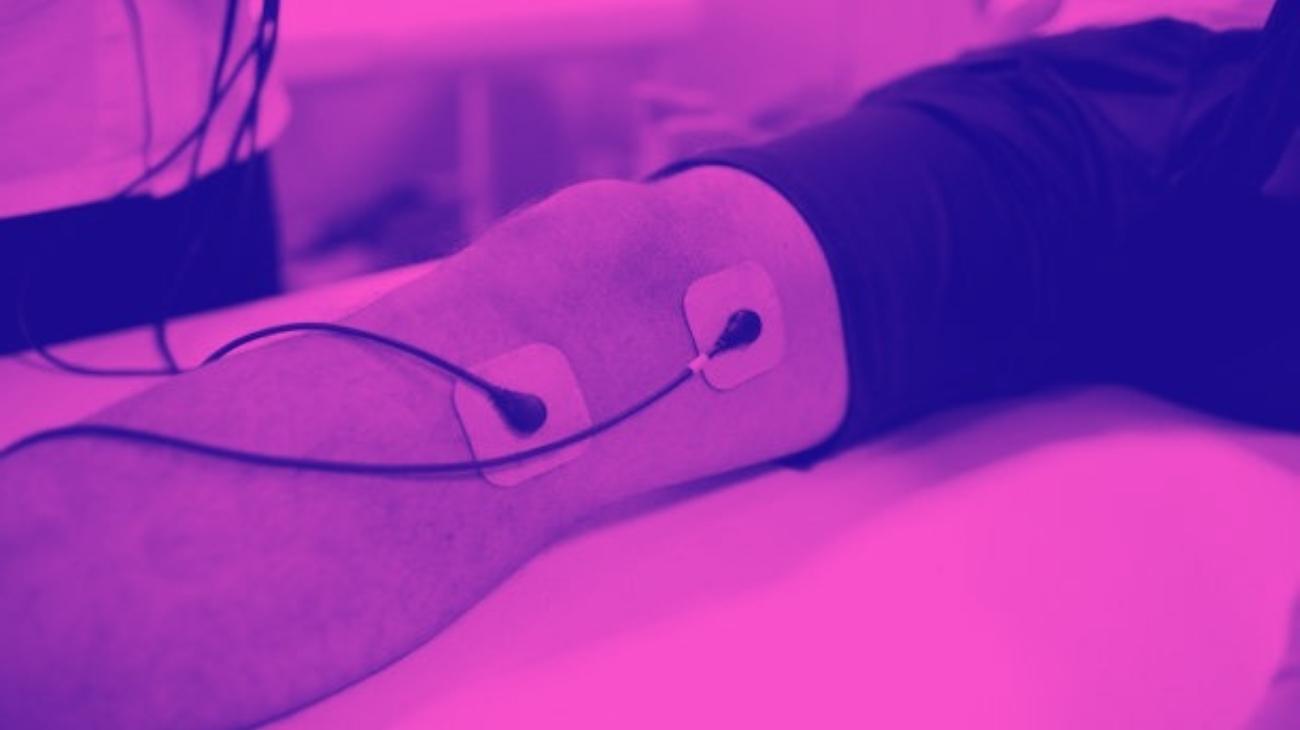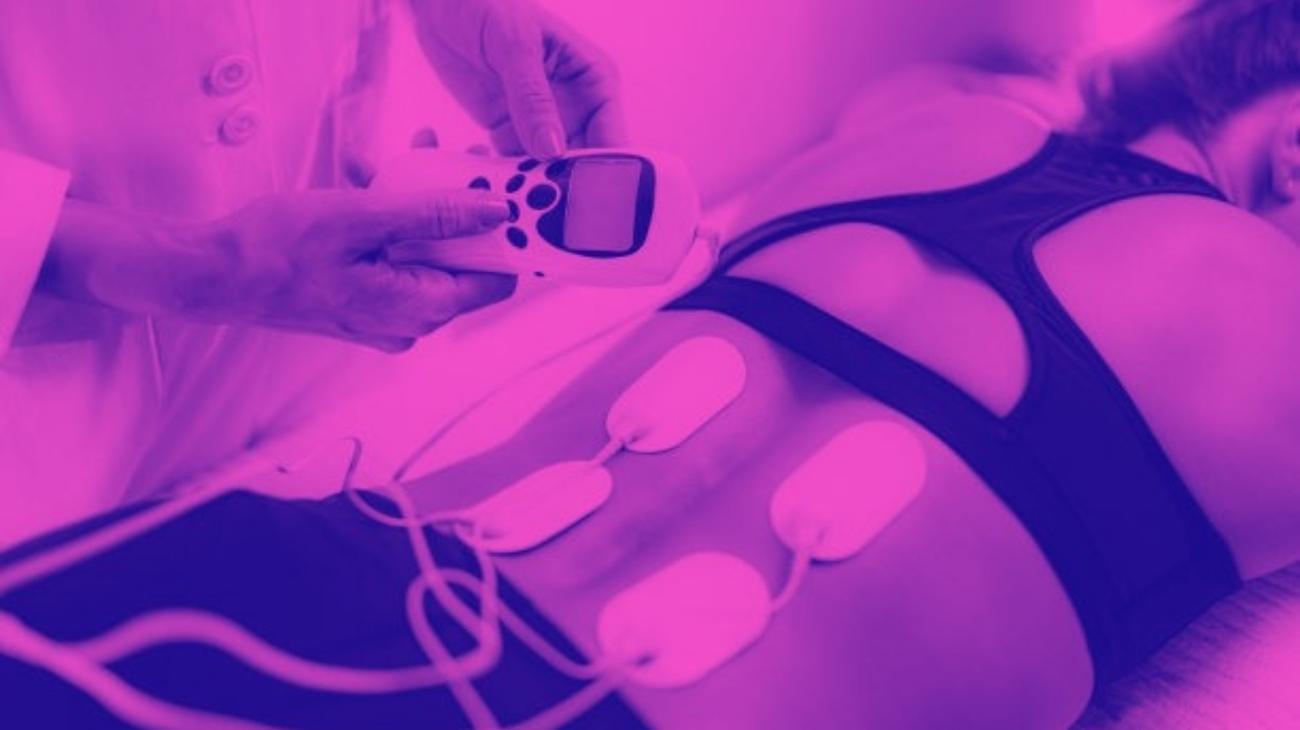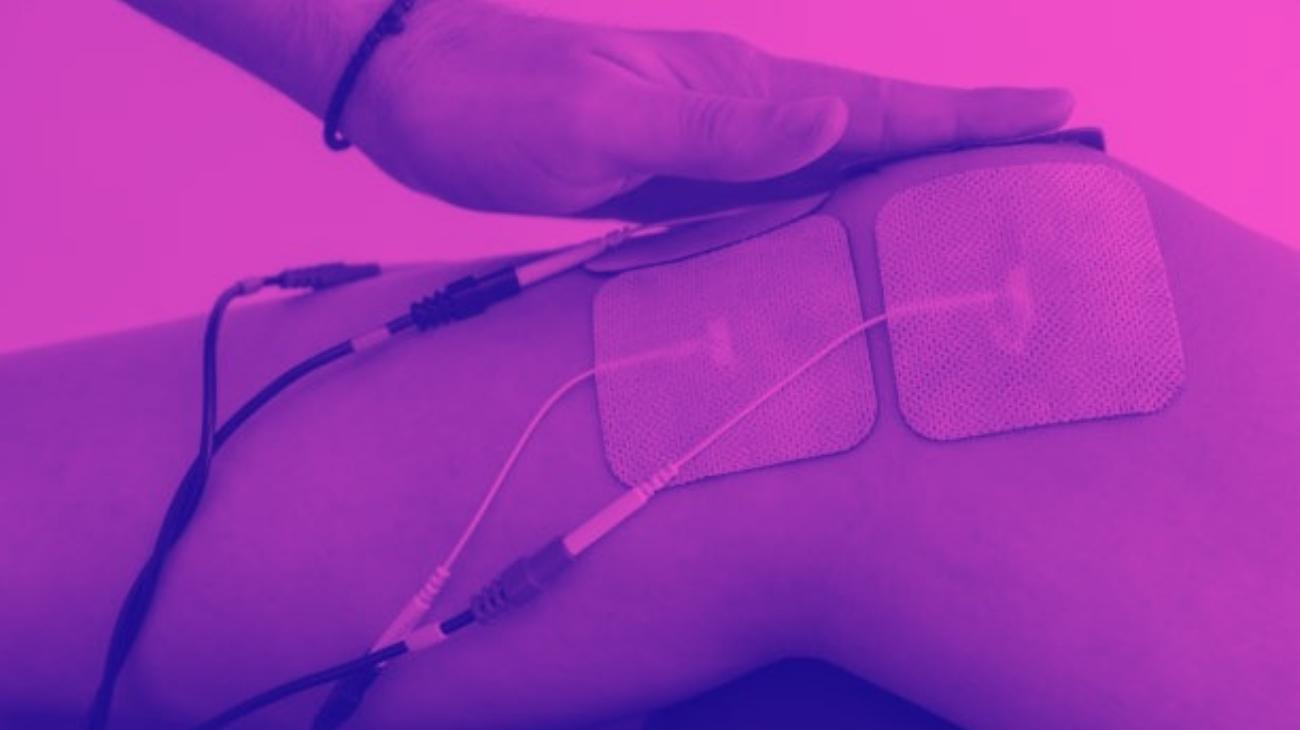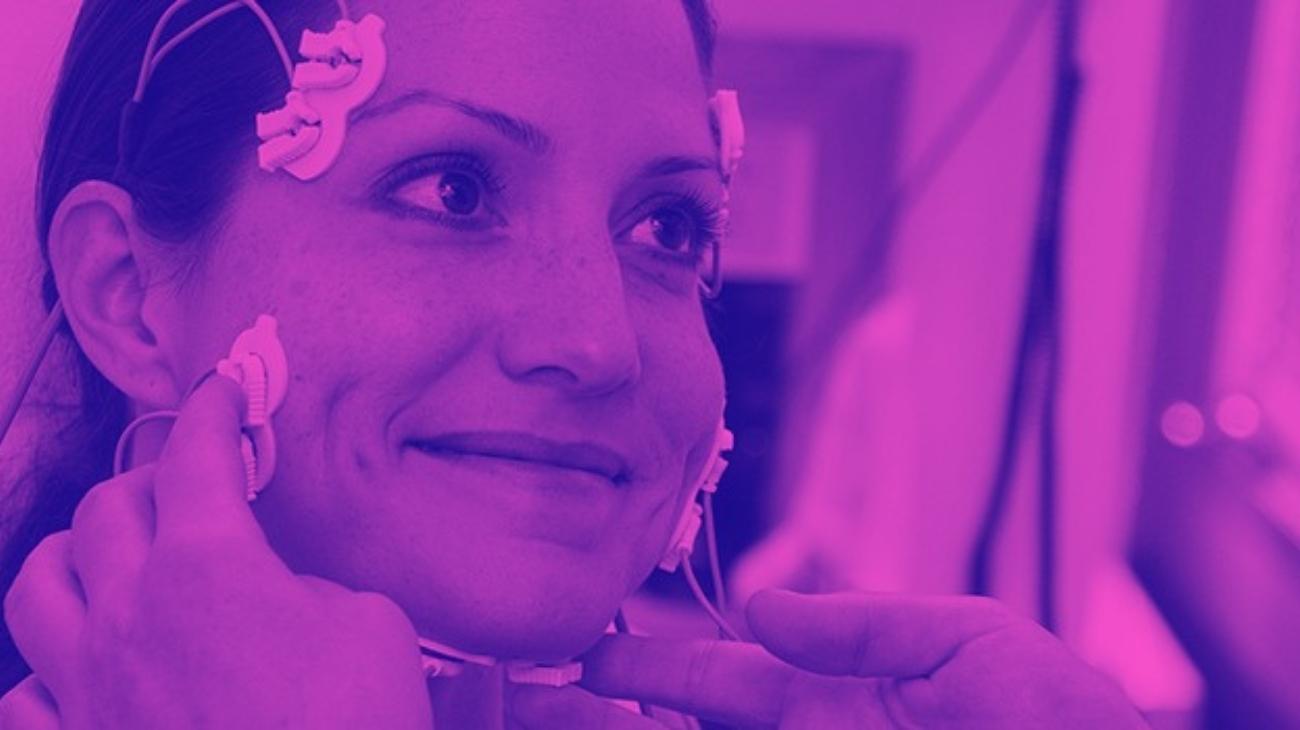- How to use TENS machines to relieve chronic pain?
- Best TENS units for treating fibromyalgia pain
- Video: How to place electrodes pads for fibromyalgia?
- More types of EMS electrostimulators and TENS machines that you should know
- What is fibromyalgia and what are the causes?
- What are the most common types of fibromyalgia?
- Differences between TENS and EMS: Which is better for treating fibromyalgia?
- Are EMS machines effective in strengthening muscles and preventing fibromyalgia?
- Contraindications to the use of electrodes and electrotherapy
Although a large number of injuries locally affect a joint or nerve, there are disorders and conditions that can cause widespread pain in many areas of the body, greatly reducing the quality of life of those who suffer from these disorders. One of the most common of these conditions is fibromyalgia.
This disorder can greatly increase patients' sensitivity to pain, which can be generalized or localized, and for which it is necessary to find methods for the treatment of this particular symptom. This is where TENS and EMS electrotherapy comes in. In the following paragraphs, we will teach you the most salient characteristics and symptoms of fibromyalgia, and how to apply electrotherapies effectively to treat its symptoms.
How to use TENS machines to relieve chronic pain?
Since the main symptom that characterizes the condition of fibromyalgia is generalized pain, the effective application of TENS unit therapy can be very useful to prevent the condition from affecting the patient more than necessary.
Below, we will teach you what you need to know to apply TENS correctly:
Where to place the electrodes?
Unlike injuries or other disorders such as carpal tunnel syndrome, whose symptoms focus on a specific area of the body, the pain caused by fibromyalgia affects the entire musculoskeletal system, so the pain occurs simultaneously throughout the body, being more intense in some areas than in others.
The areas in which the pain is most intense differ from one patient to another, and the positioning of the electrodes should prioritize these areas, being applied first to the area of the body in which the patient expresses the most intense pain.
From there, the ideal procedure is to apply the therapy over the areas in order of decreasing intensity, until the pain sensation is sufficiently reduced.
Which current to use?
The fact that fibromyalgia is a neurological disorder that affects the body in a generalized way at the nervous level, in addition to variations in the intensity of the pain it presents in different cases, makes it a complex task to define the ideal intensity for TENS treatment.
With this said, the priority in these cases is to numb the nerve endings of the affected area and to promote the release of endorphins that allow the patient to get rid of the pain sensation. For both purposes, the ideal base intensity is 100 Hz, which can be increased according to the intensity of pain presented by the patient.
Best TENS units for treating fibromyalgia pain
Taking into account the negative effect that fibromyalgia has on the nervous structure of the body, it is necessary to be aware of the devices that have the most effective programs and settings to treat its symptoms. Among these devices we can mention:
- Type: TENS
- Channels: Dual
- Modes/Programs: 24 Modes
- Intensity: 20 Levels
- Wireless: Yes
- Heat Therapy: No
- Battery: Rechargeable Lithium (up to 20 hours)
- Electrodes: 10 Pads
- Display: Touch
- Size: 5.12" x 2.56" x 0.39" - 0.35 lbs
- Portable and small size
- Includes carrying bag
- Long battery life (up to 20 hours)
- Accelerates recovery from sports injuries
- Reduces pain symptoms
- Not for muscle hypertrophy
- Does not include user manual
- No heat therapy
It has 24 modes of use and 20 intensity levels that can be applied in isolation to each of the device's channels thanks to its dual channel function, allowing different therapies to be applied to separate areas of the body. In addition, it has a session timer mode and automatic shut-off that will allow you to give greater efficiency to your sessions and make better use of the energy of its high-capacity lithium battery.
- Type: TENS
- Channels: Dual
- Modes/Programs: 8 Modes
- Intensity: 25 Levels
- Wireless: Yes
- Heat Therapy: No
- Battery: 3 AAA Batteries
- Electrodes: 4 Pads
- Display: Digital
- Size: 2.14" x 5.5" x 7.08" - 0.33 lbs
- Includes carrying bag
- Improves joint mobility
- Portable and small size
- Reduces pain symptoms
- Good quality
- Few types of programs
- Not suitable for muscle hypertrophy
- Battery operated
It has an interesting session timer function that allows you to adjust the duration of each therapy up to a maximum of 60 minutes. Its compact size allows it to be carried in your pocket, so you can take it with you from home to work, or on the road, and use it whenever you need it.
- Type: TENS
- Channels: Dual
- Modes/Programs: 5 Modes
- Intensity: 10 Levels
- Wireless: Yes
- Heat Therapy: No
- Battery: Rechargeable Battery
- Electrodes: 4 Pads
- Display: Digital
- Size: 8.8" x 2" x 7.8" - 1.15 lbs
- Includes user manual
- Prevents muscle atrophy
- Accelerates recovery from sports injuries
- Includes carrying bag
- Reduces pain symptoms
- Non-universal electrode replacements
- Not suitable for muscle hypertrophy
- Few types of programs
The TENS 7000 muscle stimulator includes one of the most complete electrical stimulation therapy packages you will find. It includes 1 TENS 7000 unit, 2 guide cables, 4 packs of reusable pads, 1 9-volt battery, 1 instruction manual and a hard case to carry your electrostimulation equipment wherever you want.
- Type: TENS
- Channels: Dual
- Modes/Programs: 20 Modes
- Intensity: 20 Levels
- Wireless: Yes
- Heat Therapy: Yes
- Battery: Rechargeable Lithium (up to 10 hours)
- Electrodes: 8 Pads
- Display: Digital
- Size: 4.12" x 2.24" x 0.43" - 1.54 lbs
- Reduces pain symptoms
- Rechargeable battery
- Includes user manual
- Portable and small size
- Includes carrying bag
- Not for muscle hypertrophy
- No heat therapy
- No touch screen included
It has 20 modes of use that apply different types of massages oriented to treat a wide variety of ailments, and with its independent channel control mode you will have the possibility of configuring different programs for each of the channels individually, to apply different types of massages in various areas of the body.
- Type: TENS
- Channels: 4
- Modes: 15 Programs
- Intensity: 20 Levels
- Wireless: No
- Heat therapy: No
- Battery: Rechargeable
- Electrodes: 8 Pads
- Display: LCD
- Size: Not specified
- Independent control mode
- Instant pain relief
- 20 intensity levels
- 15 different working modes
- Portable device
- Battery life not specified
- Does not specify dimensions and weight
- No heat therapy
All its modes of use are FSA and HSA approved, making it completely safe for anyone to use. It can be operated and set up very easily. The package includes reusable electrodes coated with adhesive gel in 3 sizes: 2 units of 2x4 inches, 4 units of 2x2 inches and 2 units of 1.5x1.5 inches.
- Type: TENS
- Channels: 4
- Modes: 24 Modes
- Intensity: 20 Levels
- Wireless: No
- Heat therapy: No
- Battery: Rechargeable (10 hours of use)
- Electrodes: 24 Pads
- Display: Digital
- Size: Not specified
- 4 outputs with 2 separate channel configurations
- Includes 24 different pads
- Rechargeable battery
- Large display
- 24 massage modes with 20 intensity levels
- No adapter for non-US plugs
- No size specified
It has an incredibly portable size that will allow you to take it anywhere, and a high-powered rechargeable battery that will give you up to 20 hours of continuous use. It can be connected to AC power through its AC adapter, or to an external battery or laptop through its USB charging port.
- Type: TENS
- Channels: 4
- Modes: 24 Programs
- Intensity: Not specified
- Wireless: No
- Heat therapy: No
- Battery: Rechargeable
- Electrodes: 8 Pads
- Display: LCD
- Size: Not specified
- 4 independent channels
- Provides cramp relief
- Portable Device
- Promotes tissue healing
- 24 programs
- Few electrodes
- Does not specify battery life
- Does not specify intensity and size
It has 24 clinically proven massage programs, which are divided into 12 TENS therapy programs and 12 muscle stimulation training modes. It has a long-life rechargeable lithium battery that will give you a great autonomy of several hours of continuous use, eliminating the extra cost of buying replacement cylindrical batteries.
- Type: Combo
- Channels: Dual
- Modes/Programs: 9 Programs
- Intensity: 20 Levels
- Wireless: Yes
- Heat Therapy: Yes
- Battery: Rechargeable Lithium
- Electrodes: 2 Pads
- Display: Digital
- Size: 4.05" x 1.14" x 4.05" - 0.42 lbs
- Improves joint mobility
- Improves blood circulation
- With heat therapy
- Portable and small size
- TENS+EMS Combo
- Battery life not specified
- Non-universal electrode replacements
- Few electrodes included
This versatile device can treat both chronic and acute pain in a safe and natural way, thanks to its ability to increase the production of endorphins in the human body. It has 20 intensity levels that can be adapted to your needs and its heat therapy function allows it to reach a temperature of 43 °C (109 °F). Its long-lasting pads have a fairly long lifespan, allowing up to 30 uses.
- Type: TENS
- Channels: -
- Modes/Programs: Unspecified
- Intensity: Not specified
- Wireless: Yes
- Heat Therapy: No
- Battery: Rechargeable Lithium
- Electrodes: 2 Pads
- Display: No Display
- Size: 1.42" x 3.27" x 6.22" - 0.10 lbs
- Reduces pain symptoms
- Includes user manual
- Portable and small size
- Wireless electrodes
- Rechargeable battery
- No battery life specified
- No intensity levels specified
- No display included
Its efficient use of TENS technology allows it to block pain signals before they reach the brain, making it a safe method of treating ailments. It also has a long-lasting lithium battery and an energy-efficient function, which switches the device off every 20 minutes. One of the best devices on the market in terms of portability, discretion and functionality.
- Type: Combo
- Channels: -
- Modes/Programs: 15 Programs
- Intensity: Not specified
- Wireless: Yes
- Heat Therapy: No
- Battery: Rechargeable Lithium
- Electrodes: 4 Pads
- Display: No display
- Size: Not specified
- TENS+EMS Combo
- Control from mobile app
- Rechargeable battery
- Includes user manual
- Reduces pain symptoms
- Does not specify battery life
- Does not specify intensity levels
- Does not specify measurements and weight
To provide one of the fastest and most comprehensive improvements for pain of all types, the PowerDot 2.0 has over 400 different usage modes with different settings, aimed at muscle recovery, performance enhancement and pain relief, which can be adapted according to recent activity, fatigue level and the area to be treated. All these options can be managed through its mobile application, which is available for both Android and iPhone mobiles.
Video: How to place electrodes pads for fibromyalgia?
Electrodes for arms
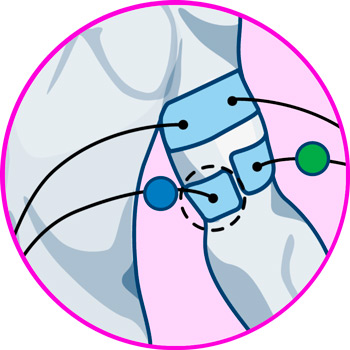
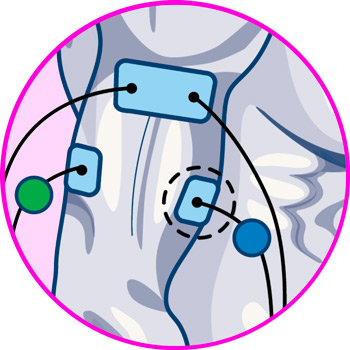
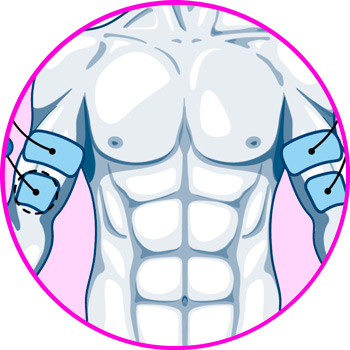
Electrodes for forearms
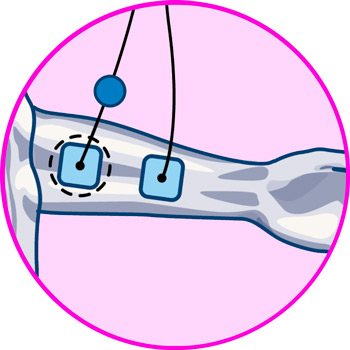

Electrodes for back
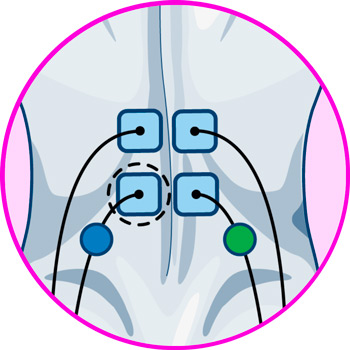
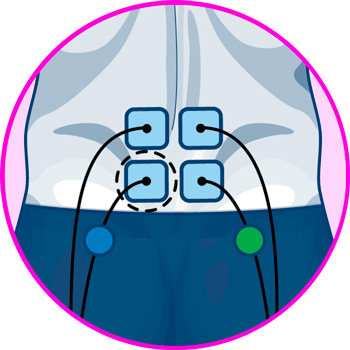
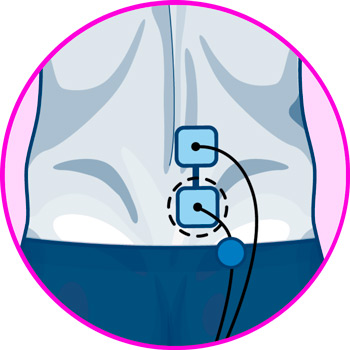
Electrodes for legs
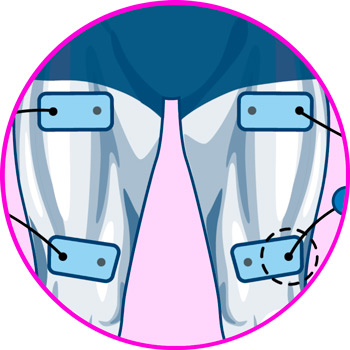
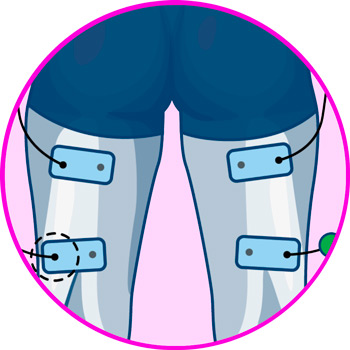
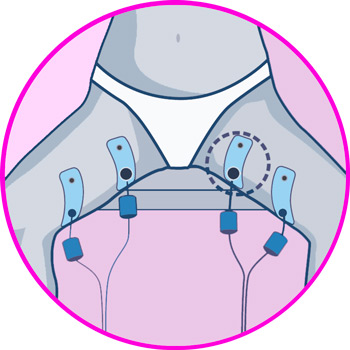
Electrodes for calf
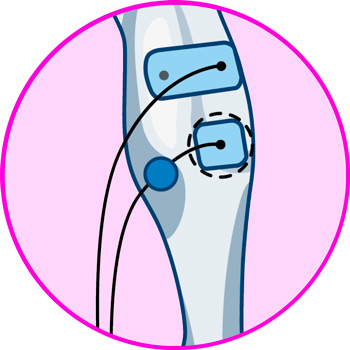
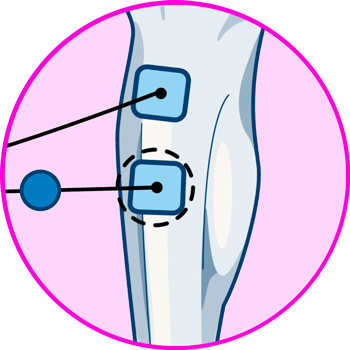

More types of EMS electrostimulators and TENS machines that you should know
What is fibromyalgia and what are the causes?
It is a chronic neurological disorder characterized by a generalized pain sensation that affects the musculoskeletal structure, in addition to producing fatigue, sleep disorders, memory problems and mood changes. It is believed that fibromyalgia affects the central nervous system amplifying the perception of pain.
The main symptoms of this disease are the following:
- Muscle and bone pain: Fibromyalgia causes widespread pain that is described as constant, mild and bothersome, lasting at least three months. The widespread pain affects both sides of the body, above and below the waist.
- Fatigue: the pain associated with fibromyalgia constantly disrupts patients' sleep, with others reporting waking up tired despite getting plenty of sleep, as well as suffering from other sleep disorders.
- Cognitive problems: Fibromyalgia causes difficulty in attention, concentration and focus, due to an effect called "fibrom fog".
What are the most common types of fibromyalgia?
The nature of fibromyalgia and its link to the motor apparatus, in conjunction with the multiple symptoms that accompany the disease, give it a variety of types that are classified according to different criteria.
The most commonly treated and common types of fibromyalgia are the following:
Idiopathic fibromyalgia (type I)
Idiopathic fibromyalgia is the type of fibromyalgia that produces in the patient a high sensitivity to pain. It is one of the most common types and unlike other types, the complaints are not associated with psychopathological processes.
Patients diagnosed with this type of fibromyalgia demonstrate a stable mood and usually a control over reactions to pain, although they also present severe cases of hyperalgesia (high sensitivity to pain).
Chronic disease fibromyalgia (type II)
Fibromyalgia type II is closely associated with chronic diseases of any type from degenerative to neoplastic, but most cases are diagnosed in patients suffering from chronic rheumatologic diseases.
One of the most common disorders leading to type II fibromyalgia is rheumatoid arthritis, in addition to many other systemic diseases and locoregional processes. The latter have a high probability of developing fibromyalgia.
Psychopathological fibromyalgia (type III)
This type of fibromyalgia is highly related to psychological disorders that make the involvement of a psychiatrist in the treatment of the disease indispensable. Type III fibromyalgia develops more easily in patients with severe psychopathological disturbances.
It is very common in patients with psychopathological pictures of anxiety, depression and dissociation, which derive in a hypersensitivity to pain and very low values of self-control over it.
Simulated fibromyalgia (type IV)
Consists of a group of patients who simulate fibromyalgia, taking advantage of the fact that the characteristics of the condition are well known and the lack of tests to diagnose it accurately.
It is usually done by individuals seeking to obtain a permanent leave from work, and once obtained, patients stop going to doctors' offices. There are certain objective tests to identify such patients, although they are not 100% accurate.
Differences between TENS and EMS: Which is better for treating fibromyalgia?
One of the most effective methods for the treatment of fibromyalgia is electrotherapy, thanks to its effects that favor direct pain relief. However, it is necessary to take into consideration the distinctions between Transcutaneous Electrical Nerve Stimulation (TENS) and Electrical Muscle Stimulation (EMS).
TENS is used as a physiotherapeutic technique that uses low-intensity electrical impulses to treat ailments caused by various injuries and disorders, including fibromyalgia. The main characteristics of this treatment are the following:
- Its electrical impulses range from 1 to 250 Hz.
- It interacts directly with the sensory branches of the areas most affected by fibromyalgia to reduce the sensation of pain.
- It is one of the most widely used methods for the treatment of symptoms caused by disorders such as fibromyalgia and similar.
- It is not a method to eliminate the disorder, only to make the treatment more bearable.
For its part, EMS is used as a method of physical training for athletes and as a method of physical rehabilitation therapy for the recovery of muscle mass after time of inactivity. It is identified by the following characteristics:
- It applies high base intensity electrical impulses, at a minimum of 70 Hz and a maximum of 150 Hz.
- It directly influences the muscle tissue by means of contractions that stimulate the regeneration of muscle fibers.
- It is widely used to increase muscle strength, endurance and elasticity.
- It does not interact directly with nervous tissue.
With this information, it is clear that TENS therapy is the ideal choice for treating the symptoms of fibromyalgia, thanks to its abilities to numb the nociceptors of the sensory branches of the nerves in the areas most affected by pain.
Because fibromyalgia is characterized by widespread pain, it is necessary to focus on the parts of the body that are subject to the most pain, and gradually move on to those with a more tolerable level of pain.
On the other hand, EMS is completely contraindicated for the treatment of pain caused by fibromyalgia, because this ailment does not qualify as an injury that requires physical rehabilitation, but as a neurological disorder that affects the brain and nervous system, so in the best case, EMS muscle stimulation will have no effect, while in the worst case it could cause even more pain in the patient.
Are EMS machines effective in strengthening muscles and preventing fibromyalgia?
Although EMS machines provide essential physical conditioning to prevent injuries and some types of disorders, fibromyalgia cannot be prevented by the use of muscle stimulation impulses, simply because the origin of the ailment is not muscular, but neurological and, in some cases, even psychological.
Specifically in cases such as fibromyalgia type III, related to psychopathological conditions, the origin is found in the psychiatric disorder that the patient may appear to have, rendering ineffective any attempt to apply physical therapy for the treatment or prevention of the disease.











